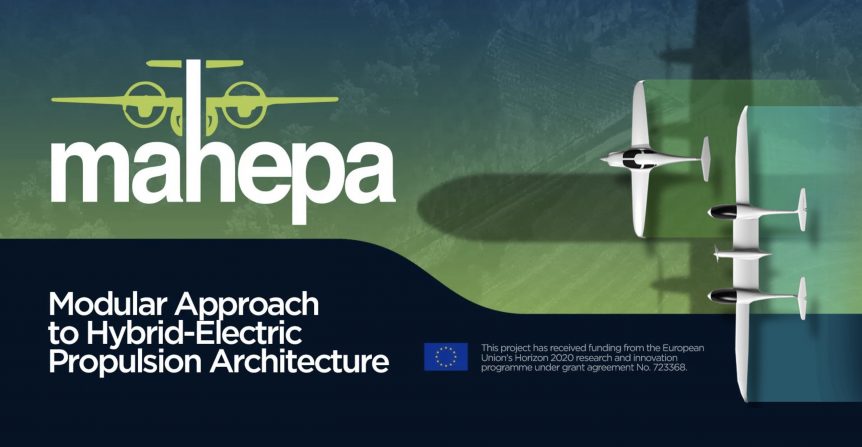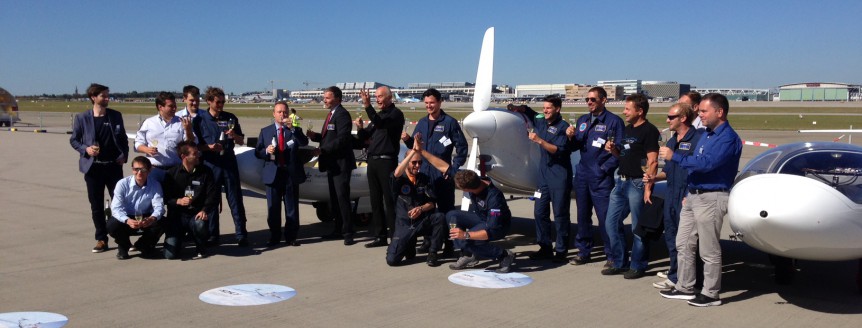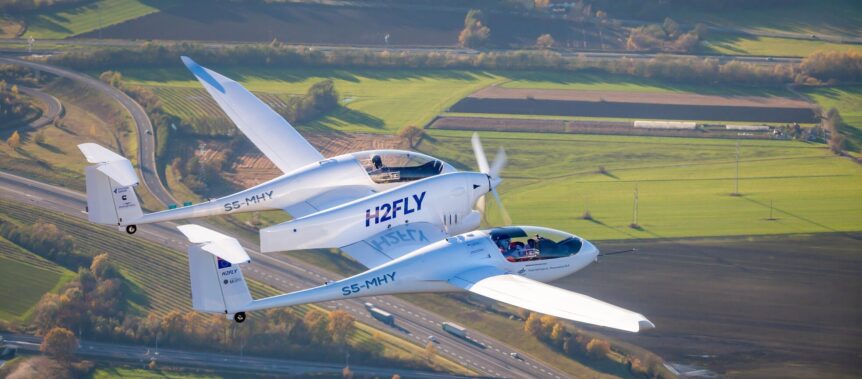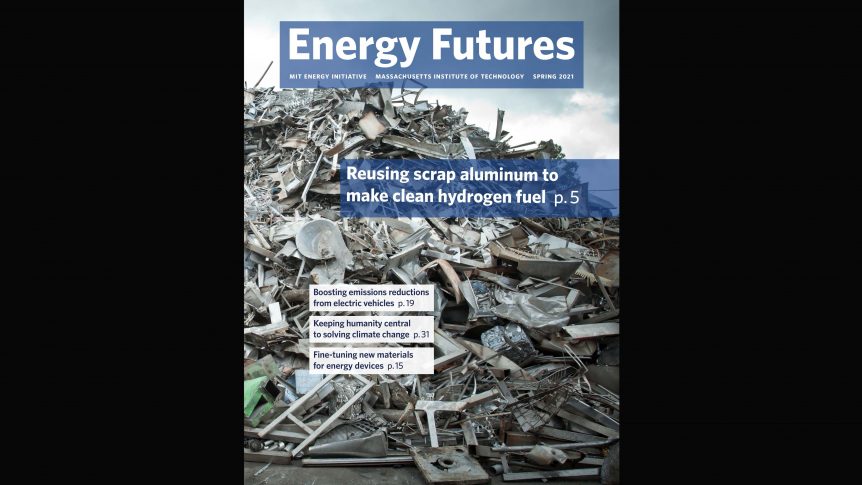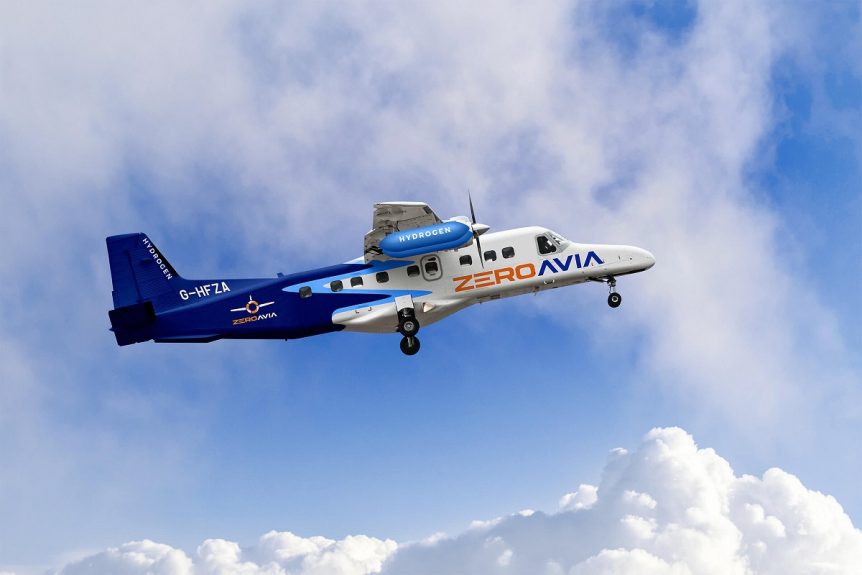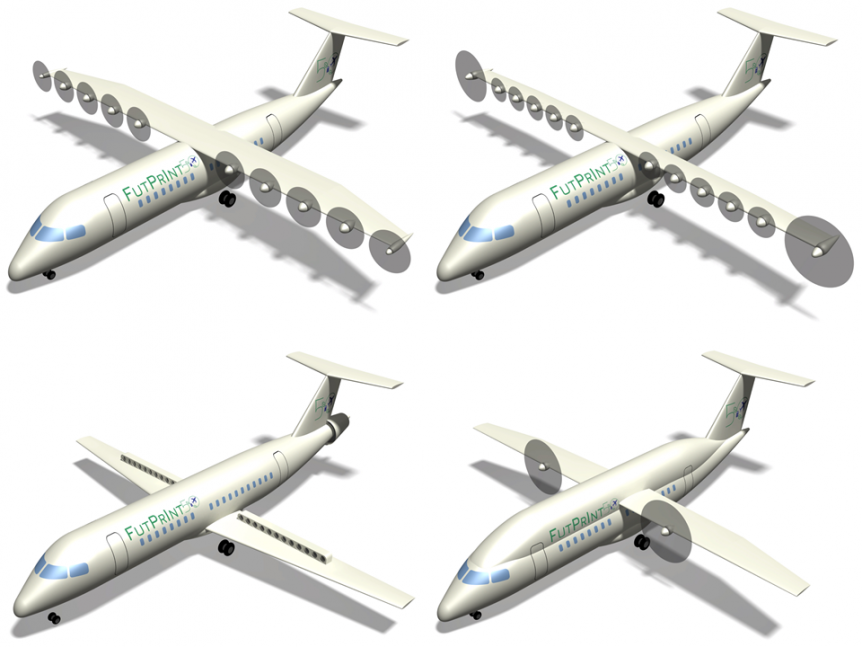MAHEPA (Modular Aproach to Hybrid-Electric Propulsion Architecture) is a European Union project to build emission-free aircraft. A public flight of Pipistrel’s HY4 hydrogen-powered, four-seat aircraft was the latest demonstration of the group’s progress. Challenging Objectives Overall, MAHEPA hopes to accomplish five objectives: Advancing the fuel-driven serial hybrid-electric Powertrain which uses a lightweight internal combustion engine (ICE), capable of running multiple fuels as the power generation module. Advancing the reliability of zero-emission serial hybrid-electric powertrain which uses a Proton Exchange Membrane (PEM) Hydrogen Fuel Cell (FC) as the power generation module. Advancing new airborne qualified, lightweight, high-power density components such as a 200 kW+ electric motor, a 100 kW+ generator and improved power electronics using Silicon Carbide (SiC) technology to increase efficiency of power transmission due to decreased switching losses. Developing “common building blocks” solutions also for different aircraft configurations, enabling the proliferation of powertrain modules between various aircraft. Gathering, analyzing and comparing in-flight performance and emission data in order to …
HY4 Makes First Public Flight – Your Editor Rides EAA’s Ford Trimotor
A day after Pipistrel, the DLR and associates flew the first public demonstration of their four-seat hydrogen-powered HY4, your editor and a friend took a brief hop around the Aurora State Airport in Oregon in EAA’s Ford Trimotor, the first certified airliner in America. The two events, roughly equal in duration, if not in historicity, demonstrate a readily observable progress in aeronautics. A quickening of design and technology 14 years after the Ford 5AT first flew on a scheduled route that took 51 hours total time to cross the United States (and split transport duties with trains), your editor’s father was whisked nonstop by Army Air Corps C-54 across the Atlantic to Shannon, Ireland, and then to Bobbington and Newquay, England to work on bombers for the duration of the conflict. Those 14 years seem like a major quickening of design and technology, which brought us pressurized cockpits, turbocharged engines, and great leaps forward in speed, endurance and reliability. Following the …
The HY4 Will Be Part of a Bigger Plan
As part of a planned network of hydrogen-fueled Air Taxis, DLR’s HY4 four-seat airplane will initially land at one of 60 fields in Germany outfitted to supply its unique needs. These fields will have hydrogen storage and fueling systems for ground transportation, making for a large web of clean transportation by air and land. With various car manufacturers promoting their hydrogen vehicles, it would be easy to see hydrogen aircraft landing, passengers departing in H2-powered cars, and even hardy explorers pedaling to and from the airport on their H2 bikes. One bicycle maker is planning to be part of the 60-airport plan. The Linde Group showed off its innovative pedelec (“pedal electric cycle”) this week. Instead of a battery, it gets power assistance from a compact fuel cell which generates electric power from hydrogen and oxygen taken from the surrounding air. The “highly efficient and zero-emissions drive system supports assisted pedaling over a range in excess of 100 kilometers with …
G4 to HY4 – Swapping Batteries for Fuel Cells
The University of Stuttgart and Pipistrel started down similar paths around 2007, with the Stuttgarters attempting a hydrogen-powered two-seat aircraft, the Hydrogenius; and Pipistrel developing a self-launching craft with either two-stroke power or an equivalent electric motor. The two groups came to rely on one another, with hydrogenius using the forward fuselage and wings of the Taurus G2 with hydrogen tanks in the fuselage and a Sineton motor on the tail. On February 27, 2008, Professor Rudolf Voit-Nitschmann, the father of the solar powered aircraft Icare 2 and the unofficial World Record holder for distance flown in a solar powered aircraft, along with dipl. ing. Steffen Geinitz and dipl. ing. Len Schumann met with Pipistrel leaders, including CEO Ivo Boscarol and designer Tine Tomazic at the company headquarters in Ajdovscina. Because the area aft of the wing was different for the Pipistrel G2 and Hyrogenius, the fuselages looked entirely different. Hydrogenius used the volume behind the wing to stow the H2 …
H2Fly Achieves HEAVEN’s Goal
H2Fly has an historic aircraft in its fleet, the HY4, as part of the HEAVEN program to, “Demonstrate the use of liquid, cryogenic hydrogen in aircraft.” Originally the G4, the craft won the NASA Green Flight Challenge in 2011, posting a passenger mile per gallon efficiency of 403.5 – equivalent to driving your loaded Prius from San Francisco to Los Angeles on under four gallons of fuel. Resurrected as the HY4 and flown on gaseous hydrogen, the craft has been reconfigured to fly on liquid hydrogen, expanding its range significantly. According to the HEAVEN program, “The hydrogen-electric ‘HY4’ demonstrator aircraft took off from Maribor, Slovenia, and saw safe and efficient operation throughout multiple flight tests.” Announced September 7, these were the first piloted flights of a liquid hydrogen fueled aircraft. Four flights, including one that lasted over three hours, “Lay the foundation for long-range, emissions-free flight, with liquid hydrogen doubling the range of the HY4 aircraft to 1,500[kilometers], compared to …
Textron Acquires Pipistrel: A Good Thing?
Textron acquires Pipistrel – just another merger? An age-old cartoon shows ever-bigger fish gobbling up smaller fish, a kind of allegory for capitalist, competitive markets, perhaps. In the electric flight world, this acquisitive spirit is exemplified by the news that Textron, “home to Cessna, Beechcraft, and Bell aviation brands,” is purchasing the smaller Slovenian firm Pipistel. Pipistrel has grown from humble origins producing powered hang gliders to its current status as a major supplier of small training aircraft, electric motor gliders and trainers and cargo vehicles. What might be great joy for Ivo Boscarol, founder and CEO of Pipistrel, comes with varying degrees of happiness and concern for others. Boscarol will remain as Chairman Emeritus and minority stockholder for the next two years and has these encouraging words for Pipistrel’s future. “To drive Pipistrel’s ambitious goals and to continue its story of success, the joining of Textron and Pipistrel provides deep expertise and resources which would otherwise be inaccessible to …
MIT Makes Hydrogen from Scrap Aluminum and Water
Three Massachusetts Institute of Technology (MIT) researchers may be on the track of producing hydrogen from a reaction between aluminum (the scrappier the better) and water. Their “simple way” of generating H2 from aluminum and water can take place anywhere, according to the researchers. Since groups like ZeroAvia and Pipistrel with the DLR (German Space Agency) and HY4 are working toward at least intermediate-range hydrogen-powered flight, an inexpensive way to produce the gas would be a blessing. Current methods of producing H2 from fossil-fuel-related materials can be more detrimental to the environment than the promise hydrogen would otherwise bring, however. Corroding but Not Rusting Dr. Laureen Meroueh along with Professor Douglas Hart and Professor Thomas Eager at MIT have found a way to react aluminum with water at normal room temperature, leading to the formation of aluminum oxide while releasing hydrogen gas. Under normal conditions, aluminum exposed to water develops a coating of aluminum oxide. Stanford researchers in 2000 discovered …
A Pulitzer Written in the Sky
Itching to test your electric airplane’s cross-country capabilities? A new Pulitzer Electric Air Race of over 1,000 nautical miles (1,150.78 statute miles to be exact) between Nebraska and North Carolina will show who has the fastest electric flying machine. Jim Moore, reporting for the Aircraft Owners and Pilots Association (AOPA), shows the connection between the original Pulitzer Trophy and today’s electric competition. “Five of the first six pilots to have their names engraved on the Pulitzer Trophy were military airmen clocked around a closed course at speeds starting at 157 mph in 1920, up to a blistering 248 mph by 1925. The trophy was created to inspire innovation, and particularly faster airplanes. That vintage trophy housed at the Smithsonian National Air and Space Museum will be engraved with its first new name in 97 years in 2022, following completion of a 1,000-nautical-mile cross-country race by up to 25 electric aircraft.” Ralph Pulitzer was son of Joseph Pulitzer, whose prizes for …
Going Big and Bigger with Hydrogen
Two companies promoting hydrogen power for aircraft are upsizing their aspirations, with aircraft hauling four to up to 40 passengers. Both have ambitious timelines. ZeroAvia, operating in Hollister, California and Cirencester, England has been flying a Piper Malibu demonstrator, but anticipates flying a 10 to 20 passenger Dornier by 2024. It would expand that to a 50-passenger craft by 2026. H2Fly in Germany has been flying their Pipistrel-designed HY4 for several years and through six generations. The firm looks forward to taking incremental steps toward a 40-passenger regional airliner by 2030. ZeroAvia ZeroAvia reports on troubling trends in aviation’s contribution to greenhouse gases, but follows with a possible solution. According to their web site, aviation accounts for over 12 percent of total transportation emissions, and may double that by 2050. High altitude contrails mean aviation emissions have two to four times the effect of ground source emissions. Regulators want drastic changes. The European Union mandates a one quarter the CO2 …
DLR’s Novel Configurations
Researchers from the German Aerospace Center (Deutsches Zentrum für Luft- und Raumfahrt; DLR) conducting research into the potential of new types of design have crafted novel configurations for future flight. The DRL and BDLI (German Aerospace Industries Association or Bundesverband der Deutschen Luft- und Raumfahrtindustrie) have published a white paper: “Zero Emission Aviation – Emissionsfreies Fliegen” explicating these configurations. Surprisingly, one of their major findings is that “Electric flight enables lighter aircraft with smaller wings and distributed propulsion systems.” Battery weight has caused MagniX and Ampaire to reduce the number of passengers or the cargo loads on conversions of existing airframes. To counter those issues, “An EU research project is investigating the potential for new propulsion systems and aircraft concepts.” Obviously, these new concepts will need to take advantage of advanced materials to lower airframe weight. Hybrids and Hydrogen Thousands of airliners parked in dry desert locations highlight how the COVID crisis has affected air travel. Despite the ongoing interlude …

